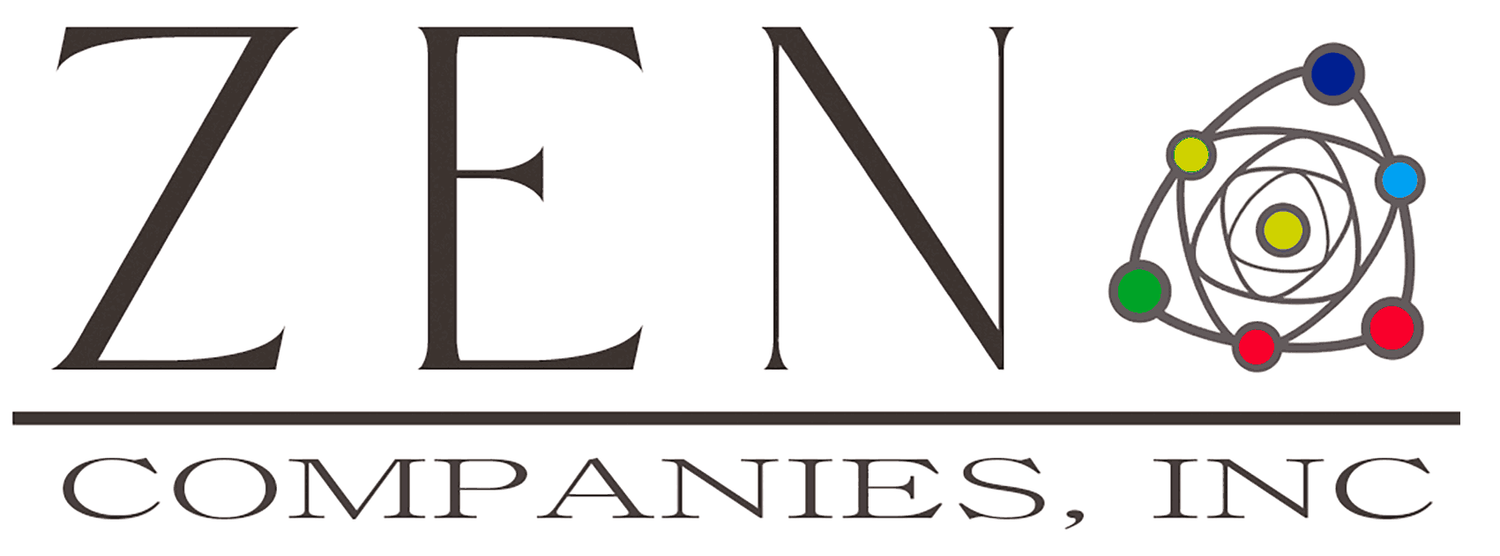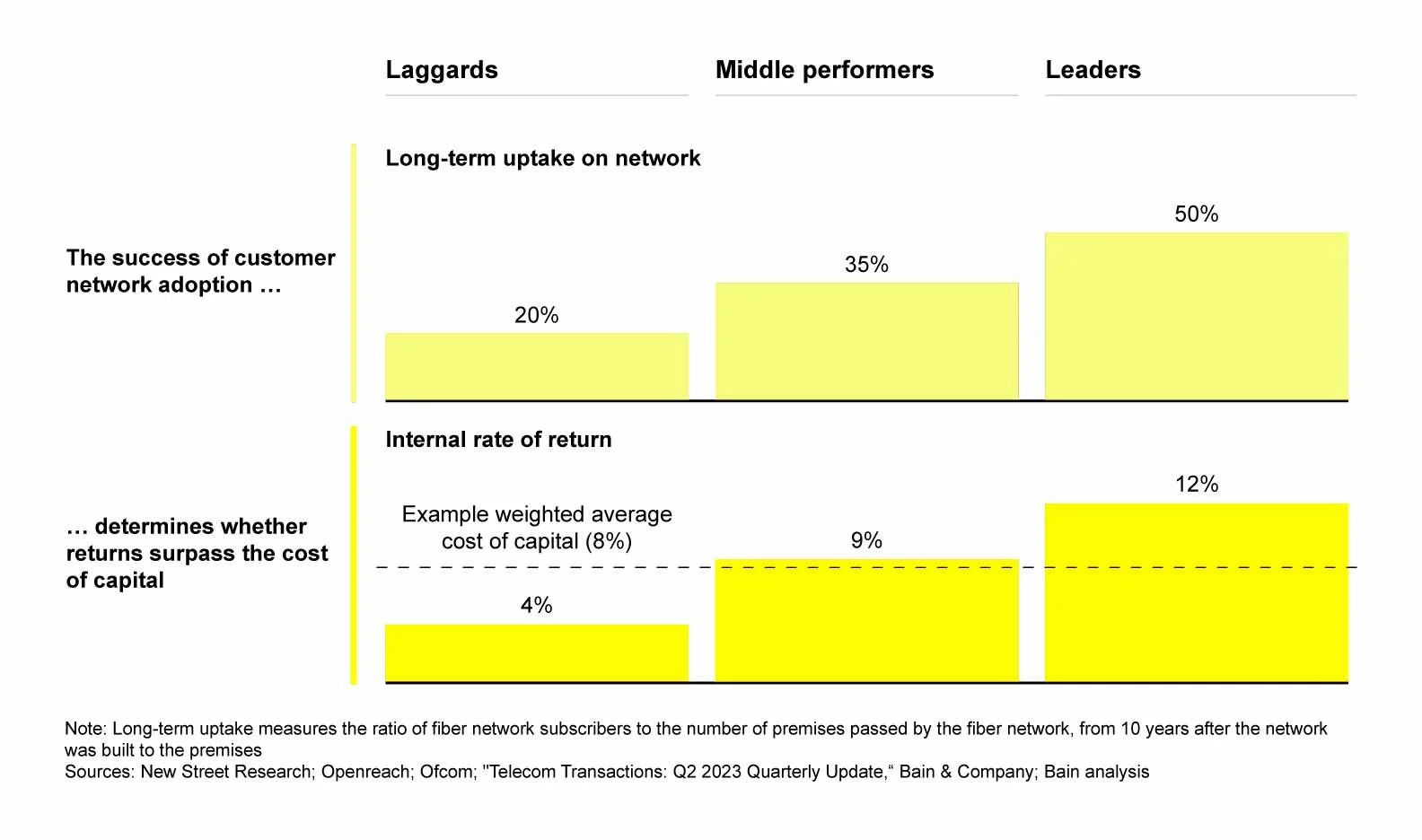
Modern Solutions
Telecom Overbuilding Problem
Telecom operators are investing heavily to connect more people to high-speed fiber networks. In 2022 in Europe and the United States alone, their networks reached 15.2 million more households than the prior year, compared with the 9.9 million they added in 2018. Incumbents, newly formed fiber companies, governments, and private investors are all active in the sector, to the extent that more than one billion homes worldwide now have high-speed fiber access.
But as fiber networks expand, telecommunications executives have run into the harsh reality that attracting customers can be more difficult than building the networks. Governments, telecommunications operators, and investors have poured hundreds of billions of dollars into the ground to build full fiber networks that deliver high-speed broadband to homes and businesses. These investments are increasing access to faster fixed-line connectivity. However, actually acquiring customers to make use of these investments—and thus deliver returns for investors—is another story. Customer adoption of the available capacity (what the industry typically calls “uptake” or “take-up rate”) of fiber service varies across the country. While some see high adoption levels, fiber uptake in most areas has been slow, in some cases lagging between 10% and 30% . That’s substantially below typical levels required for sustained value creation.
According to Bain analysis (see Figure 1), laggards plateauing at, for example, 20% long-term uptake will earn returns much lower than the typical cost of capital. The threshold for value creation is typically about 35% long-term uptake, as illustrated by middle performers. The leaders who truly succeed in driving uptake (over 50%) can deliver returns well above the cost of capital. The rewards are significant: Increasing customer uptake by 1 percentage point increases the internal rate of return by 0.3 percentage points.
Because of this, reducing costs wherever possible and maximizing market share early on is critical, and this depends upon speed to market. Experience suggests that the first FTTH operator to enter a market—whether overbuilding existing networks with fiber or rolling out new networks—can win significant market share as customers switch from cable and DSL providers.
Historically, most operators have perceived only two options to gain market share: using their current sales and support teams in the new market or hiring new sales and support teams. However, these approaches have significant drawbacks. Deploying your existing teams can lead to customer satisfaction issues in your legacy markets, while building a new team from scratch takes substantial time - up to 15 months for a new rep to become a top performer. This delay erodes your competitive edge.
ZEN offers a modern day solution to this dilemma
Cost reduction
Sales outsourcing is more cost-effective than maintaining an in-house sales and support team. According to a study by Deloitte, businesses that outsource sales operations can achieve cost savings of up to 40% compared to in-house teams.
Maximizing market share early - Speed to market
We provide trained, professional sales and support teams that are ready to engage customers on day one. This approach reduces cost and overhead while enabling a rapid market entry and high adoption levels. Rather than choosing between suboptimal options, ZEN allows you to hit the ground running in new markets.

Campaign Development
-

Door to Door
Our door-to-door sales teams can target specific geographic areas, both residential and commercial, down to the neighborhood and street level. This granular focus allows you to precisely identify and reach your ideal customers.
-

Digital Marketing
Our digital marketing services empower our sales teams to efficiently cover a wider geographic area using the internet and social media. They can work in tandem with door-to-door or event-based sales teams, marketing an area before or after their visits. This comprehensive approach allows us to thoroughly penetrate a larger market and ensure higher customer acquisition.
-

Event Sales
Our sales teams leverage event-based sales strategies, setting up booths at retail locations like Walmart, Target, Sam's Club, and Costco, as well as tents at community events. This approach creates a more casual, community-oriented sales environment, allowing for greater customer engagement.
-

US-Based Call Center Services
Our US-based call center services support a full range of functions - from sales to customer support - to help you not just generate revenue, but build lasting relationships with satisfied customers. This enables our partners to scale their business quickly, without the delay of hiring internal support staff or overburdening their existing teams.

SalesForce Al-A-Carte
Next Generation Success
How Much Do Sales Reps Cost?
Recruiting sales representatives is costly, but consider the long-term costs to your organization if you continue chugging along with an underperforming team. A study of sales metrics by the DePaul University Center for Sales Leadership found that the average cost of hiring and training a new sales rep was $114,957. These findings are from 2012 and were not recently updated. Estimates put today’s cost at more than $150,000.
Here's a breakdown of the various overhead costs associated with hiring a sales rep:
1. Recruitment & Onboarding:
Recruitment Costs:
Advertising job openings, using recruitment agencies, and conducting interviews.
Onboarding Costs:
Integrating the new hire into the company, including paperwork, orientation, and initial training.
Lost Revenue During Ramp-Up:
The time it takes for a new sales rep to reach full productivity, during which they may not generate as much revenue.
2. Training & Development:
Initial Training:
Costs associated with onboarding and providing initial training on products, services, and sales processes.
3. Management & Support:
Sales Manager Costs:
Salaries, benefits, and bonuses for sales managers who oversee and support the sales team.
Support Staff Costs:
Salaries, benefits, and bonuses for sales support staff, such as administrative assistants or customer service representatives.
4. Technology & Tools:
CRM Software:
Costs for licenses and maintenance of customer relationship management (CRM) software.
Sales Automation Tools:
Costs for tools that automate repetitive tasks, such as lead scoring, email marketing, and sales forecasting.
Other Technology:
Costs for computers, phones, internet access, and other technology used by the sales team.
5. Office Overhead:
Rent and Utilities: Costs associated with office space, including rent, utilities, and maintenance.
Office Supplies: Costs for office supplies, such as paper, pens, and printer ink.
Travel and Entertainment: Costs for travel and entertainment expenses, such as business trips, client lunches, and conference attendance.
6. Time:
Time: Costs associated with the length of time it takes to recruit, hire, and train a new sales rep.
Conclusion
As a rule of thumb, and supported by various studies, the true cost of hiring employees ranges from 1.5 – 2x their base salary.
This only takes into account known costs and doesn’t include your costs (measured in time) as a Manager or Director of a business or the costs of inactivity or lost opportunities due to performance, sickness, holidays, etc.
Should you outsource your sales team?
Companies outsource their Sales Team for many reasons, from speed to market, lack of space, reducing stress, to testing a new product or service.
Here's a more detailed look at the savings potential and benefits:
Cost Savings:
Reduced Fixed Costs:
Outsourcing eliminates the need to hire, train, and manage an in-house sales team, saving on salaries, benefits, and related overhead.
Variable Cost Structure:
Instead of fixed costs, you pay for sales performance, aligning your expenses with actual results.
Scalability:
You can easily adjust your sales team size based on demand, avoiding the costs of hiring or firing employees.
Access to Expertise:
Outsourcing allows you to tap into specialized sales expertise without the high cost of building an internal team.
Reduced Overhead:
Outsourcing providers handle infrastructure, technology, and administrative tasks, freeing up your resources.
Other Benefits:
Faster Time to Market:
Outsourced sales teams can quickly start generating leads and sales, accelerating your market entry.
Focus on Core Activities:
By outsourcing sales, you can concentrate on product development, marketing, and other strategic initiatives.
Improved Sales Execution:
Outsourcing can help you manage outcomes more directly and improve overall sales execution.
Access to Global Talent:
Outsourcing can allow you to tap into a wider pool of skilled sales professionals, including those in different locations.
Reduced Risk:
Outsourcing can help you mitigate the risk of hiring and managing an in-house sales team, as the outsourcing provider takes on the responsibility for recruitment, training, and performance management.
Outsourcing sales can lead to cost savings by reducing fixed expenses like salaries, benefits, and office space, allowing your businesses to focus on core activities while we scale your sales efforts quickly and with more flexibly.

